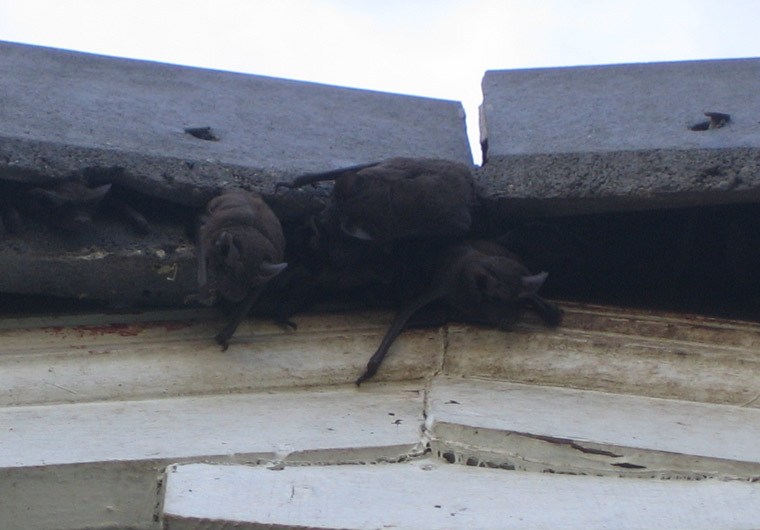- info@wildlife-removal.com
Call us for help in your town
Wildlife Removal Education
What areas can bats enter a house through?
Need bat removal in your hometown? We service over 500 USA locations! Click here to hire us in your town and check prices - updated for year 2020.
Bats don't make their own holes to get into a property. They simply don't need to. Many of the species that you will find as nuisances or pests are so tiny, they can already squeeze through the smallest of gaps with total ease. That doesn't mean that you can leave those holes open, however; you are going to need to seal up each and every single one of them, but you can't do that until you have safely, legally, and humanely evicted every single bat in a colony.

If you have a hundred bats in a colony in your barn, getting them out is obviously not going to be an easy task. Not only that; many states have laws against evicting or removing bats (most species) at certain times of the year, usually when they are birthing or in maternity roosts, caring for young.
You will need to check the right and wrong times to attempt DIY bat removal from the barn before you take action. It will change from place to place, and certain endangered or threatened bat species will have more restrictions than others, but you are usually not permitted to move, trap, or harass bats in any way, from spring through to fall — mid to late May until mid to end of August. What this means is that you will have a very brief period of time — between fall and winter — to move the critters along. If you miss that window, yo'll need to wait until next year. This is why it is always a good idea to hire in someone who actually knows what they're doing to get rid of bats in the house — getting it wrong could mean that you miss your chance to be free of them. You'll then need to wait until fall/winter the following year to take action.
Where should I start looking?
Bats fly and roost up-high, so that's exactly where you'll want to start looking. The attic, roof, and upper levels of your home are likely to be affected; these are the places that offer similar living conditions to caves and tree hollows out in rural settings.
If you head outside at sunset, or in the couple of hours just after it, you'll likely see bats flying around. Well, you might not see them, but rather a flash of them. They're very fast flyers and are easily missed. You might hear them though; they make a high-pitched ‘squeaky' noise sometimes, and you might hear the sound of flapping wings if you're lying in bed at night and everything else is super quiet.
You can use your senses of sight and sound to help pinpoint the danger zones — the areas that the bats have managed to use to sneak in and out of your home. A closer look with a torch at night (and perhaps again in the morning, using natural daylight) should show you more evidence — fur-stains, guano (bat droppings), broken pieces of siding, or other holes.
Make a note of which holes seem to be used the most — those are the ones that you'll want to attach exclusion devices too. The other, smaller, lesser-used holes should be sealed up, preventing entry and exit alike.
Go back to the Bat Removal page, or learn about bats in the attic with my Bats in the Attic guide.


















